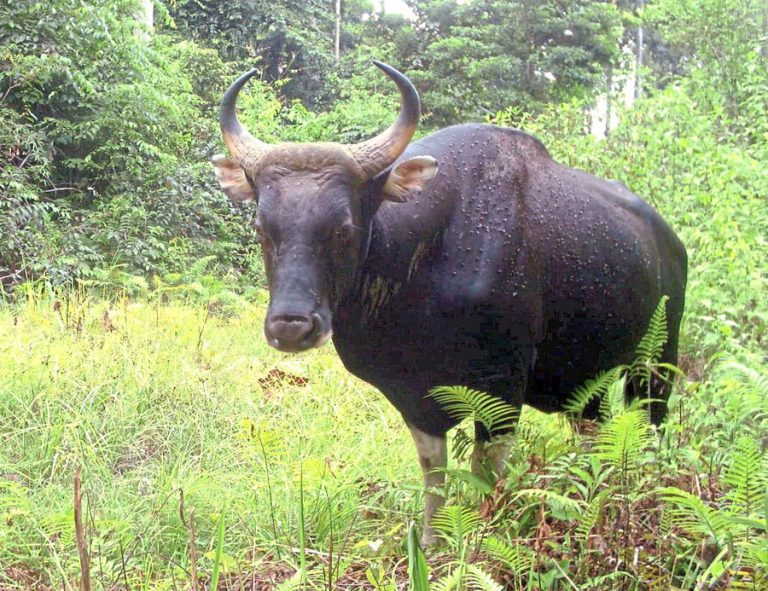KINABATANGAN: The hum of boat engines broke the morning silence at the mini jetty of Bilit Adventure Lodge, heightening the excitement of this writer and 15 other media colleagues who had been eagerly waiting since 7am to explore the breathtaking biodiversity along the Kinabatangan River.
Brought from Peninsular Malaysia by the Malaysian Palm Oil Green Conservation Foundation (MPOGCF), we were set to cruise through the 2,632-hectare Pin River Conservation Area (SpnCA) as part of the “Orangutan Tracking Mission”, the highlight of a media tour to the Land Below the Wind.
During the visit from Nov 12 to 16, we also explored the Brumas Wildlife Corridor and Borneo Elephant Sanctuary in Tawau to witness firsthand the environmental and wildlife conservation projects carried out by several palm oil plantation companies in Sabah.
Donning bright orange safety vests, we embarked on our journey along Malaysia’s second-longest river, a treasure trove of biodiversity and one of the world’s richest ecosystems.
This area is a paradise for nature lovers, home to several endangered and critically endangered species, prompting everyone on the boat to keep their cameras ready to capture these rare moments.
Occasionally, our guide from Tawau, Edmunda Junior – affectionately known as Ed – reminded us to keep our hands out of the water to avoid potential crocodile attacks.
“Ah! No wonder there are so many green signs at the jetties warning, ‘Caution! Crocodile Area,’” the writer mused silently.
Throughout the two-hour journey across SPnCA, we encountered various wildlife species, particularly monkeys and birds.
We also observed three suspension bridges built by the Conservation and Biodiversity Unit (ConserveByU) of Sawit Kinabalu Sdn Bhd to provide orang utans with safe passage across the Kinabatangan River.
Hoping for a glimpse of these primates, we asked our boatman to linger near the bridges. However, none made an appearance, leaving us slightly disappointed.
Despite not spotting any wild orang utans, we were delighted to witness proboscis monkeys, gibbons, rhinoceros hornbills, wrinkled hornbills, and kingfishers – all of which are on the endangered species list.
The proboscis monkeys, unafraid of humans, treated us to what seemed like a circus performance, their playful antics drawing laughter and fascination.
Amid the excitement, our guide Ed suddenly whispered, “Crocodile,” urging us to stay silent.
At first, we could only make out what appeared to be a submerged rock. But with the binoculars provided by Ed, the outline of a crocodile became unmistakably clear.
“From afar, it’s hard to distinguish between a crocodile and a rock,” remarked one of the media colleagues.
According to ConserveByU executive Rashidah Maqbool Rehman, besides being a permanent habitat for crocodiles, SPnCA is home to 17 mammal species, three of which are exclusive to Borneo. Eight of these mammals, including orang utans, are critically endangered.
“In addition to orang utans and proboscis monkeys, SPnCA is home to the Asian palm civet, silvered langur, and Sunda pangolin—all threatened species.
“There are also 28 protected bird species, eight of which are endangered, such as the rhinoceros hornbill, wrinkled hornbill, and stork-billed kingfisher, alongside 85 insect species, five of which are only found in Borneo,” she said.
ConserveByU Manager Charis Saliun shared that Sawit Kinabalu Sdn Bhd has gazetted over 8,000 hectares of its land across Sabah – including in Kinabatangan, Sandakan, Lahad Datu, and Tawau – as conservation areas.
More than RM11 million has been invested since 2000 in efforts to protect endangered wildlife around SPnCA, including installing camera traps to monitor the area’s biodiversity.
“We use camera traps to gauge the success of our conservation efforts. From the images captured, we’ve seen orang utans with their young, gibbons with their offspring, and pangolins with their babies. This, to me, is a promising indicator,” he told reporters.
Through partnerships with NGOs like the Borneo Conservation Trust and MPOGCF, the orang utan population has increased to 55 individuals this year, according to monitoring by the NGO Hutan.
“In 2014, the Borneo Conservation Trust recorded 37 orang utans, which rose to 42 in 2019 and 44 in 2022,” Charis said.
Initially operating with just seven staff members doubling as forest rangers, the team has grown to 26 members this year, reflecting the success of its conservation efforts.
“Reforestation in previously cleared areas for palm oil plantations, which began in 2000, has yielded positive results, with greenery now thriving where barren lands once stood,” he added.
Efforts to conserve the environment have also been extended to developing eco-tourism products, aiming to raise public awareness, including among residents of five nearby villages, about the importance of environmental preservation.
“We started offering tourist visits with a special free package for a year since last year. However, beginning in July, we have started charging for the tours.
“From January to October this year, we recorded 412 tourists, mostly from Europe, Japan, and South Africa,” said Charis, adding that it is currently finalising the standard operating procedures for a night river cruise that will be introduced soon.
MPOGCF General Manager Hairulazim Mahmud, described SPnCA as a pioneering Orang utan Diplomacy project in collaboration with Sawit Kinabalu Sdn Bhd.
He noted that MPOGCF provided a one-off contribution of at least RM10,000 for in-situ conservation projects.
Hairulazim also highlighted the One Million Trees Planting Project aimed at creating habitats for orangutans in Sabah, specifically in Lower Kawag, within the Ulu Segama-Malua Forest Reserve. This project has been ongoing since 2022 and involves the participation of local communities.
“We are now entering the second phase of the project, and as of October 31, a total of RM2,638,066 has been allocated, including RM557,111 for this year.
“We have also set aside RM1 million for seedlings, and as of October 2023, 70 villagers have participated in the project.
“In 2022 alone, villagers successfully supplied 80,000 saplings for the second phase, which spans 200 hectares,” he said.
Follow our Facebook page ConserveByU for our latest updates.






